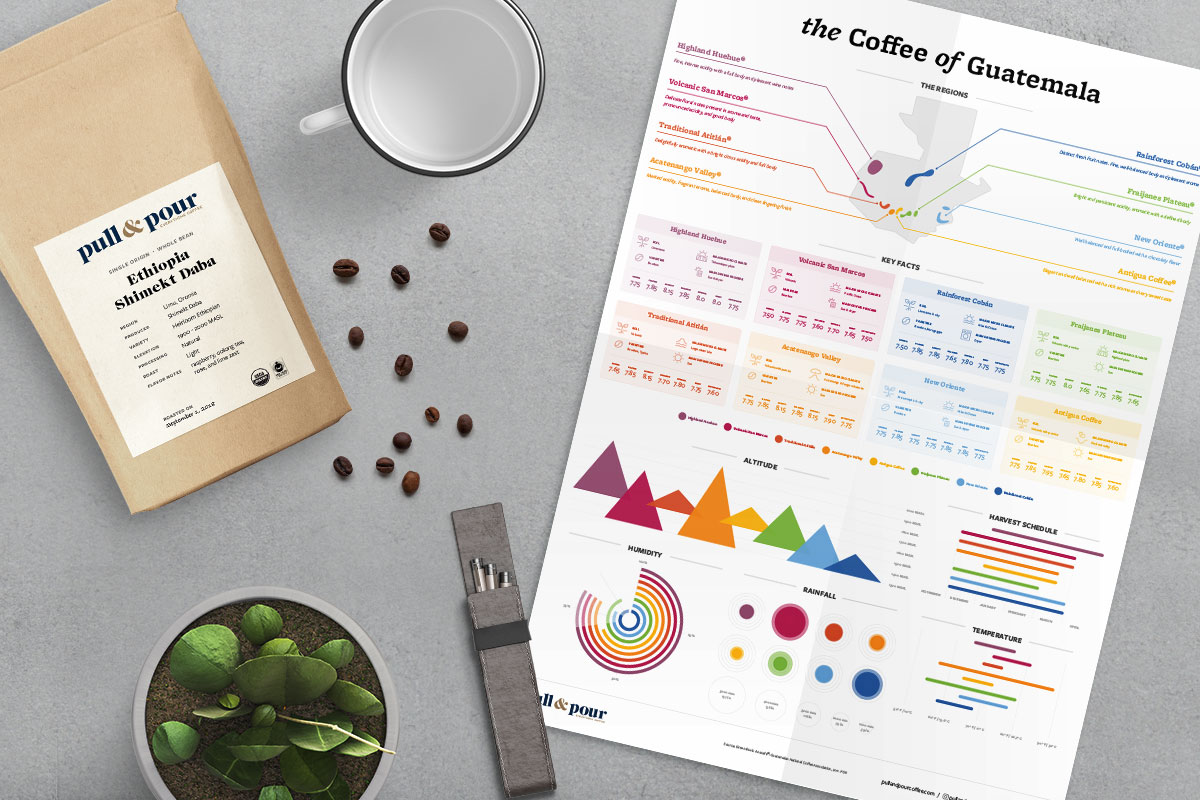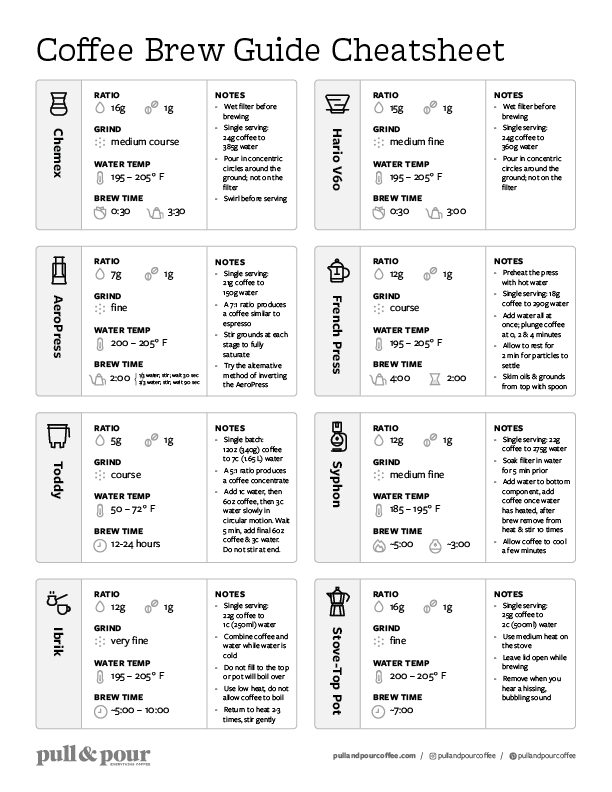Guatemala produces some of the best specialty coffee in the world. It ranges from lighter, fruity, complex coffees to the heavier, chocolatey, richer coffees. There are eight distinct coffee growing regions in Guatemala, and each produces a unique flavor profile in its coffee. I recently had the opportunity to partner with Perfect Daily Grind to dive into the wonderful world of coffee in Guatemala by visualizing the amazing data presented in Anacafé’s Green Book in a visual way though information graphics. Throughout this post I break down the various parts of the graphic, but if you scroll to the end, you can see the full piece.
The Eight Coffee Regions of Guatemala
For all of the amazing coffee Guatemala produces, the crop really is only grown in 2.5% of the country’s territory.1 Because of the diverse microclimates throughout the country—ranging from volcanic mountains to plains and the variety of rainfall and rich soil that come with them—coffee from Guatemala comes with a huge range of various flavors. The eight primary coffee growing regions of Guatemala include: Highland Huehue®, Volcanic San Marcos®, Traditional Atitlán®, Acatenango Valley®, Rainforest Cobán®, Fraijanes Plateau®, New Oriente® and Antigua Coffee®. Each region has its own coffee varieties, soil type, and microclimate that leads to its coffee’s flavor profile.
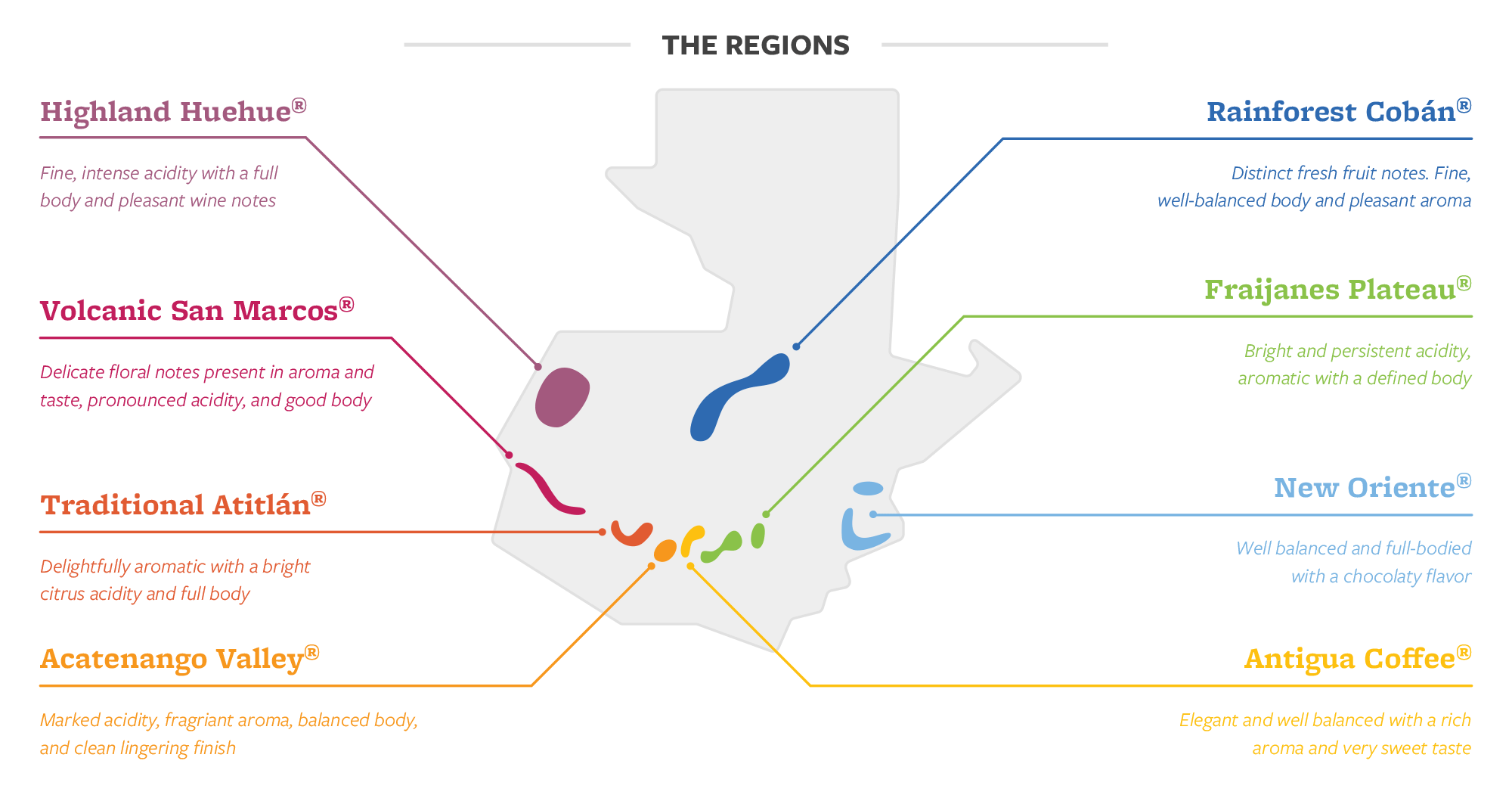
Below are some descriptions of each region’s coffee profile taken from Anacafé’s Green Book:2
Highland Huehue
Fine, intense acidity with a full body and pleasant wine notes

Volcanic San Marcos
Delicate floral notes present in aroma and taste, pronounced acidity, and good body
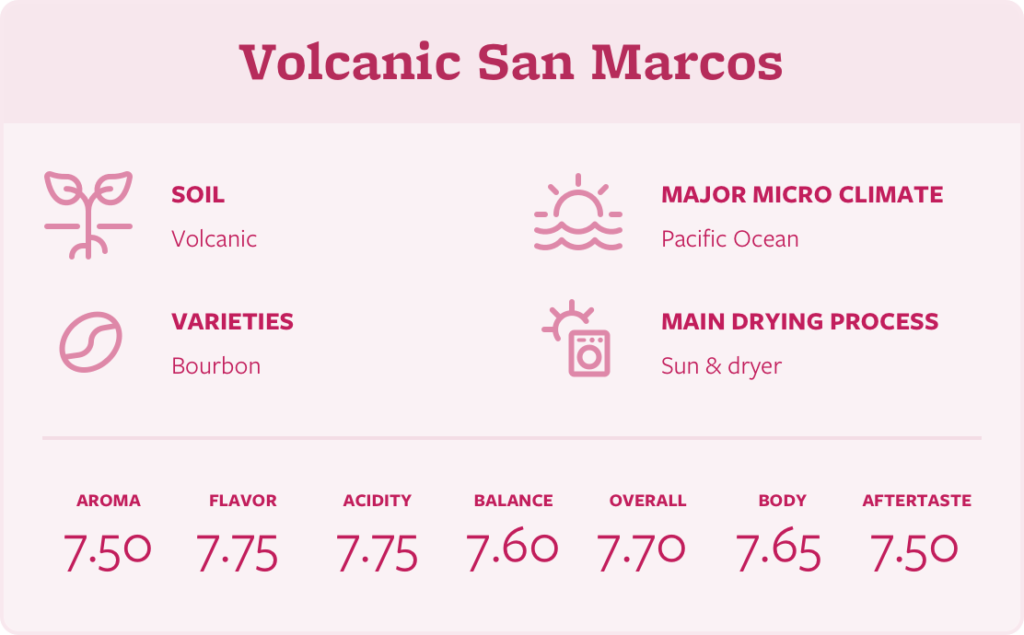
Traditional Atitlán
Delightfully aromatic with a bright citrus acidity and full body

Acatenango Valley
Marked acidity, fragrant aroma, balanced body, and clean lingering finish
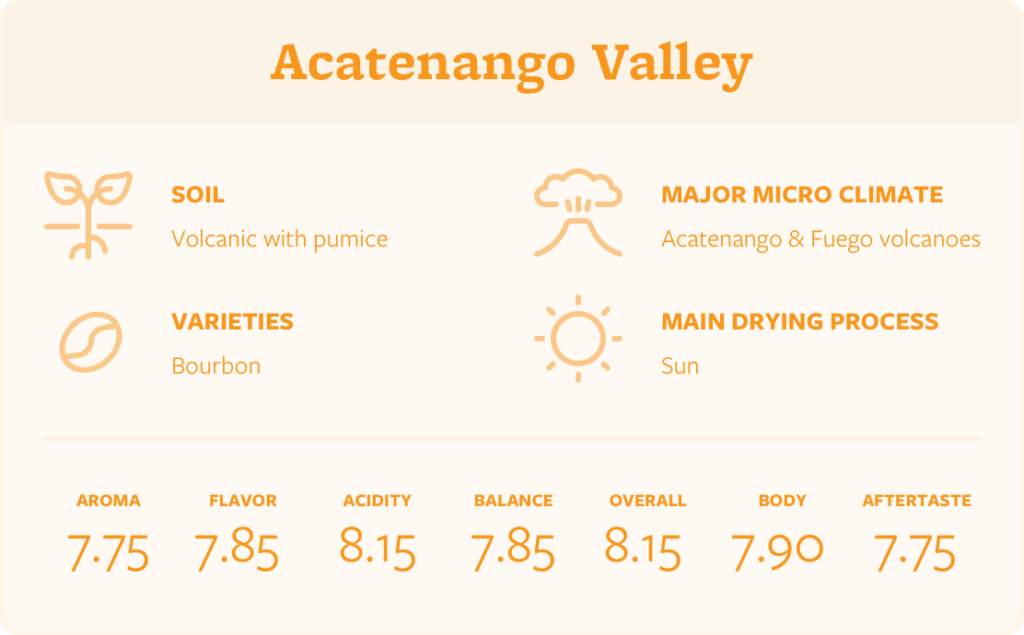
Rainforest Cobán
Distinct fresh fruit notes, fine, well-balanced body, and pleasant aroma
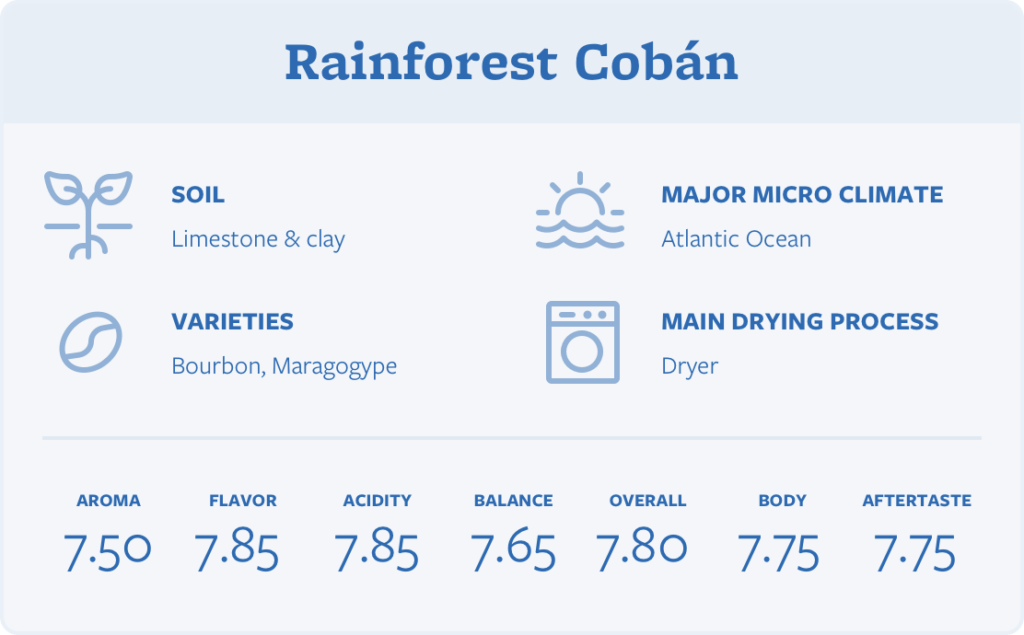
Fraijanes Plateau
Bright and persistent acidity, aromatic with a defined body
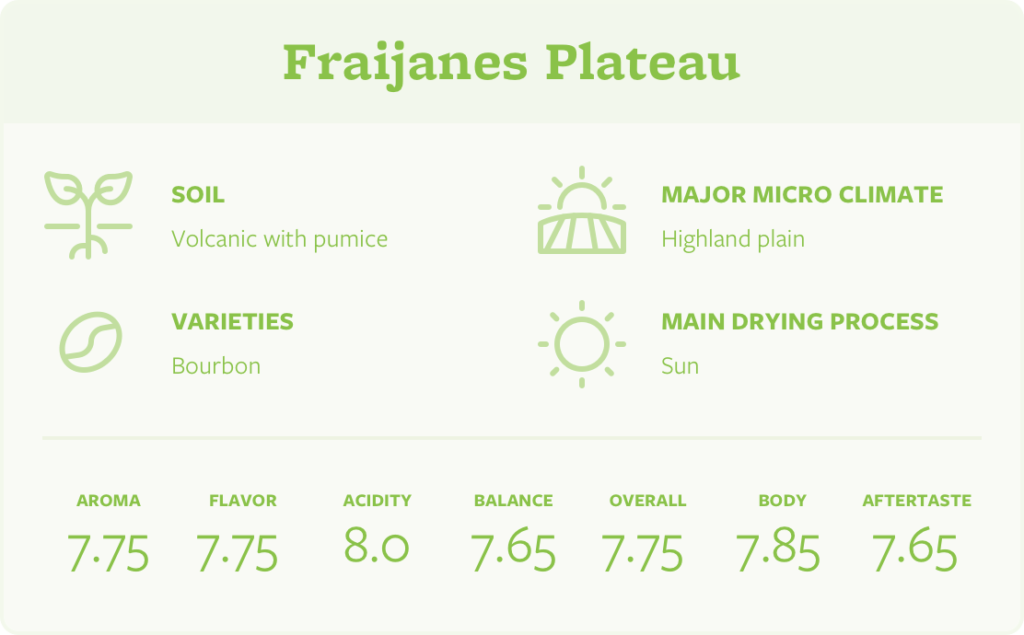
New Oriente
Well balanced and full bodied with a chocolaty flavor

Antigua Coffee
Elegant and well balanced with a rich aroma and very sweet taste
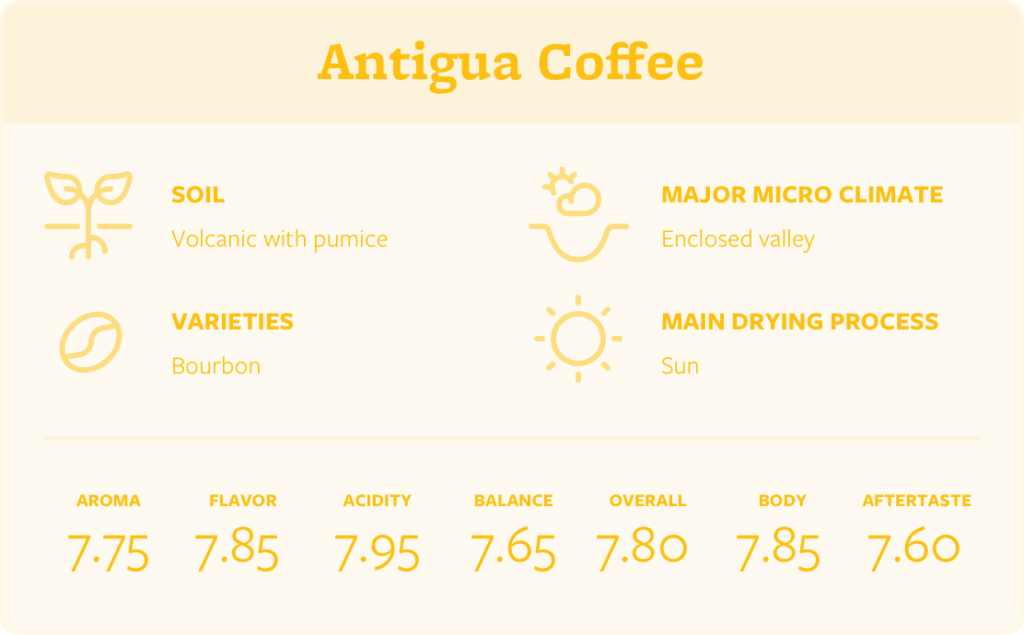

Harvest Schedule
The harvest schedule for coffee in Guatemala ranges from November through April. Each region has slightly different schedules, but the most common is from December through March.
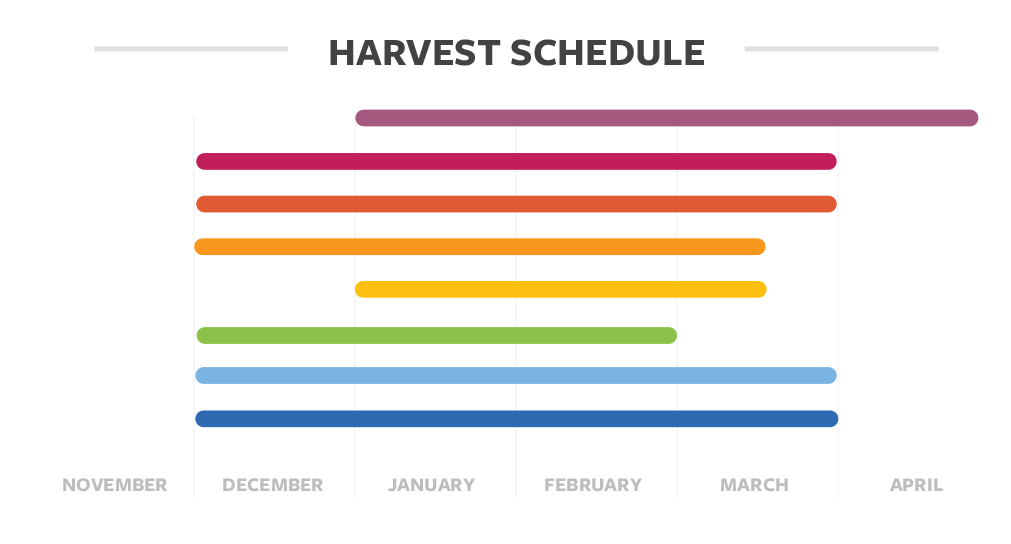
Temperature
Average temperatures among the regions range from the mid-50s Fahrenheit (~mid-teens Celsius) to the upper 80s Fahrenheit (low-30s Celsius). The wide range in temperatures is due to the very different microclimates between regions.
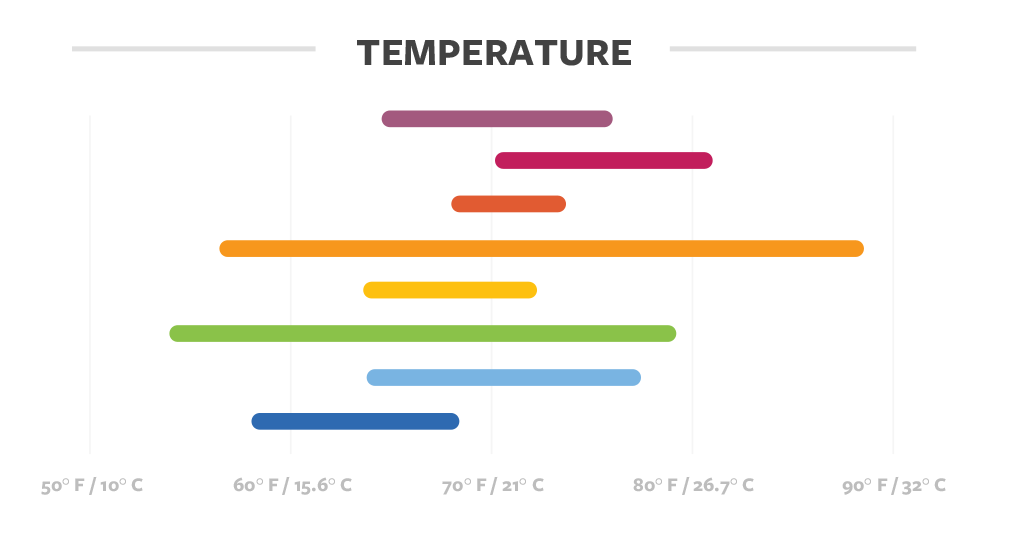
Altitude
Because the terrain ranges from plains to mountains from region to region, altitudes vary not only between regions, but also within regions. Altitudes peak at around 2,000 meters above sea level (MASL) and start at around 1,300 MASL.

Rainfall & Humidity
Water is in abundance throughout Guatemala. There are 35 major rivers, more than a thousand lakes and lagoons, and oceans on both coasts. The mountains that extend across the country ensure that the coffee crops get plenty of rain. The Pacific and Atlantic oceans on either side bring humidity that turns to rain as it gets trapped by the volcanoes and mountains found throughout the coffee growing regions. The rainfall in these regions ranges anywhere from 32 to 200 inches a year.3
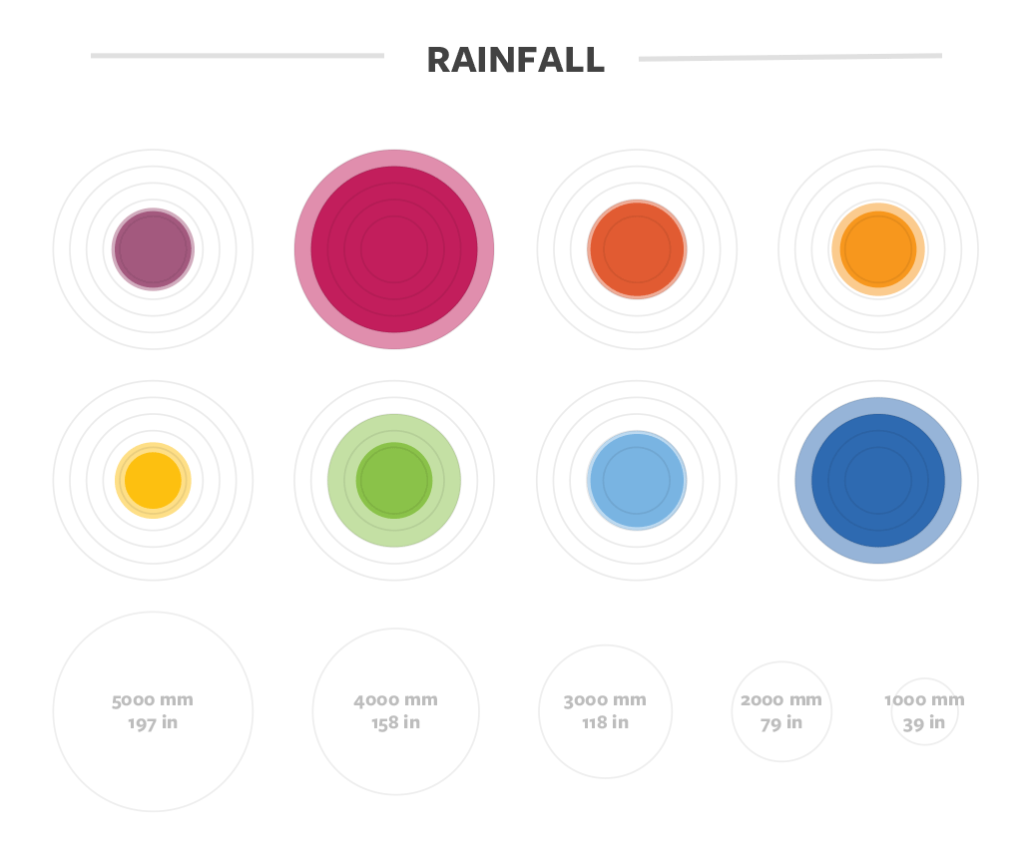
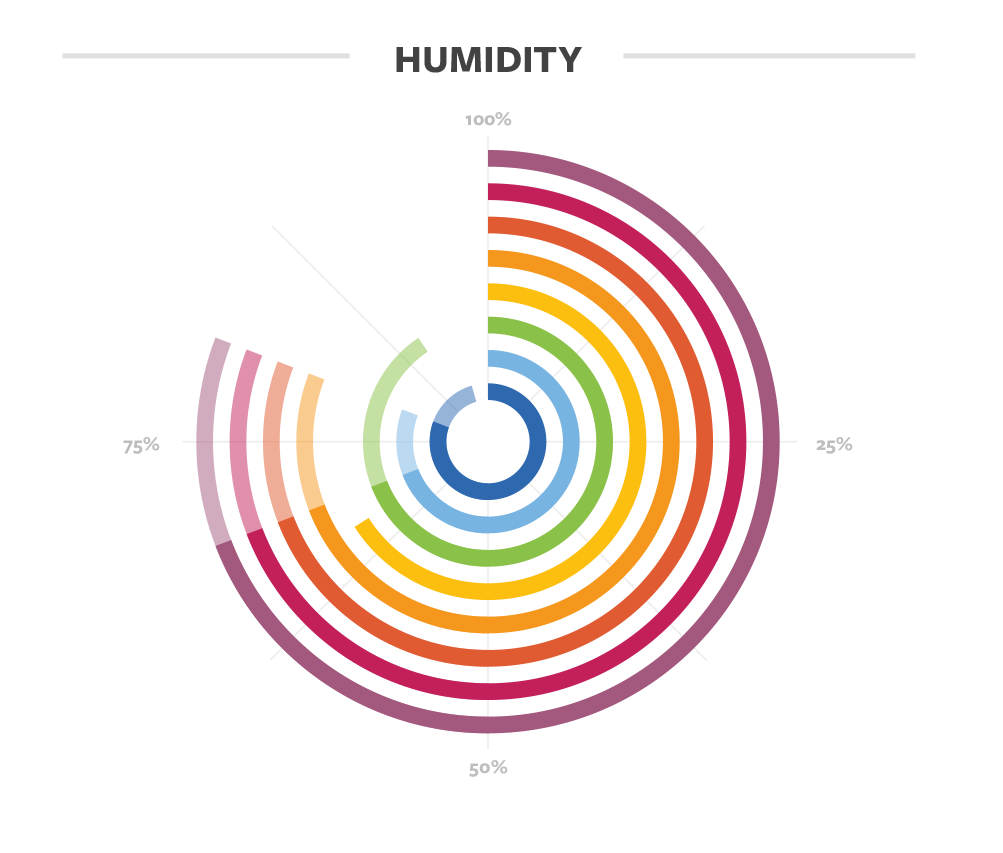
Below is a full view of the information graphic.
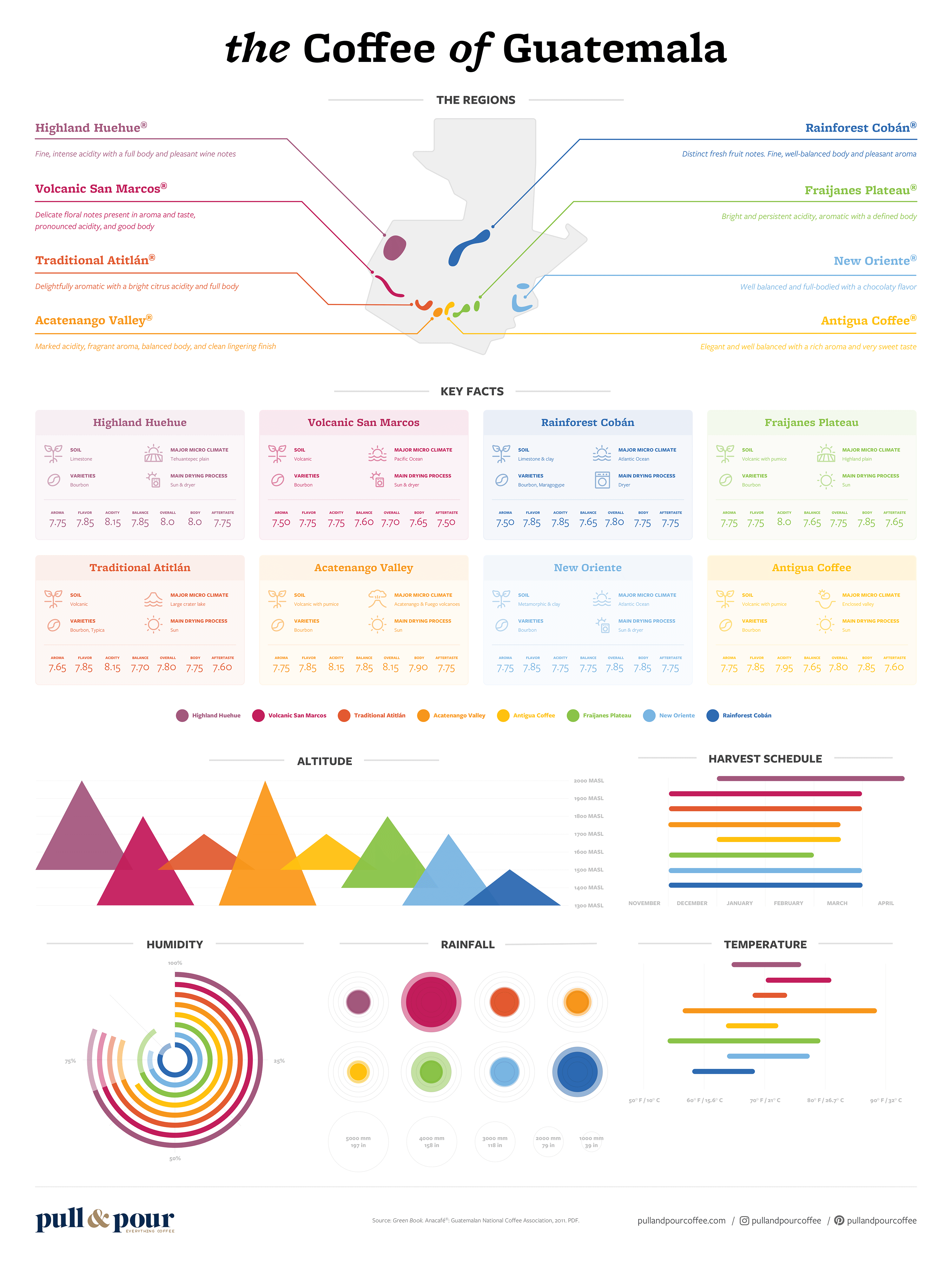
References
- “Green Book.” Guatemalan National Coffee Association, 2011. 2.
- Ibid. 10-11.
- Ibid. 22.
